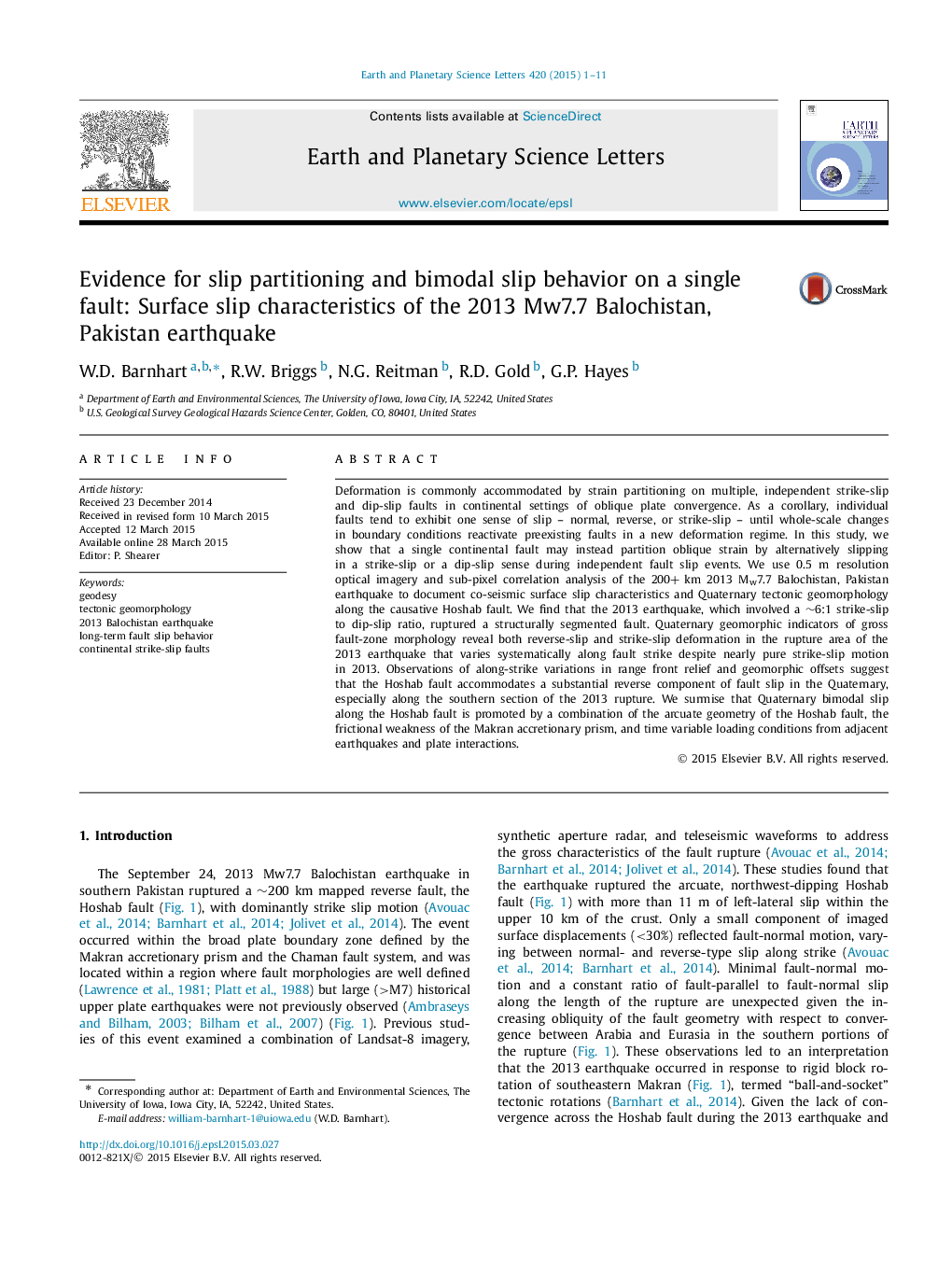| Article ID | Journal | Published Year | Pages | File Type |
|---|---|---|---|---|
| 6428152 | Earth and Planetary Science Letters | 2015 | 11 Pages |
â¢A single fault may variably slip in a strike- and dip-slip sense through time.â¢Optical imagery provides a tool to link fault behavior over multiple time scales.â¢Bimodal slip may result from various modes of continental deformation.
Deformation is commonly accommodated by strain partitioning on multiple, independent strike-slip and dip-slip faults in continental settings of oblique plate convergence. As a corollary, individual faults tend to exhibit one sense of slip - normal, reverse, or strike-slip - until whole-scale changes in boundary conditions reactivate preexisting faults in a new deformation regime. In this study, we show that a single continental fault may instead partition oblique strain by alternatively slipping in a strike-slip or a dip-slip sense during independent fault slip events. We use 0.5 m resolution optical imagery and sub-pixel correlation analysis of the 200+ km 2013 Mw7.7 Balochistan, Pakistan earthquake to document co-seismic surface slip characteristics and Quaternary tectonic geomorphology along the causative Hoshab fault. We find that the 2013 earthquake, which involved a â¼6:1 strike-slip to dip-slip ratio, ruptured a structurally segmented fault. Quaternary geomorphic indicators of gross fault-zone morphology reveal both reverse-slip and strike-slip deformation in the rupture area of the 2013 earthquake that varies systematically along fault strike despite nearly pure strike-slip motion in 2013. Observations of along-strike variations in range front relief and geomorphic offsets suggest that the Hoshab fault accommodates a substantial reverse component of fault slip in the Quaternary, especially along the southern section of the 2013 rupture. We surmise that Quaternary bimodal slip along the Hoshab fault is promoted by a combination of the arcuate geometry of the Hoshab fault, the frictional weakness of the Makran accretionary prism, and time variable loading conditions from adjacent earthquakes and plate interactions.
